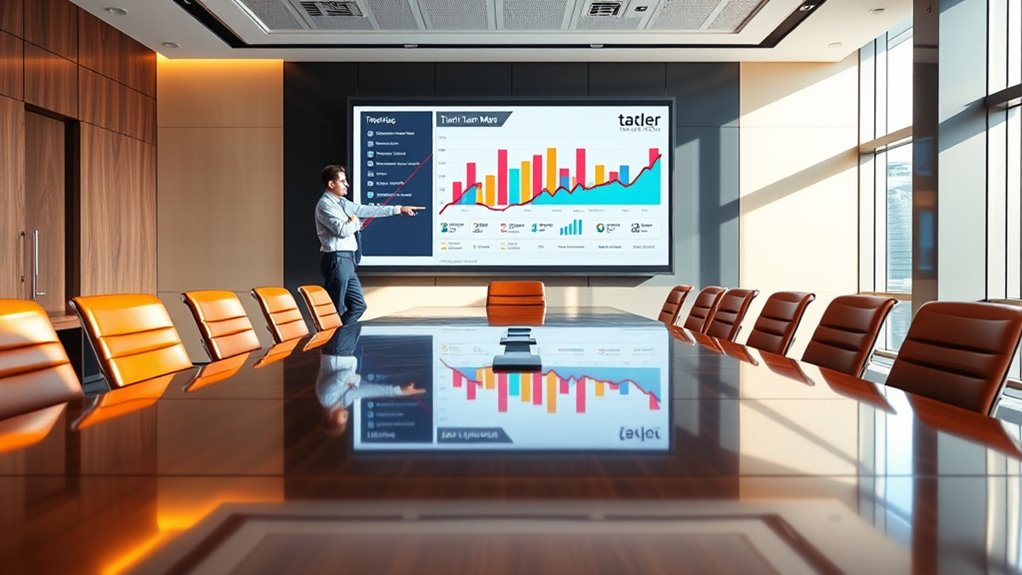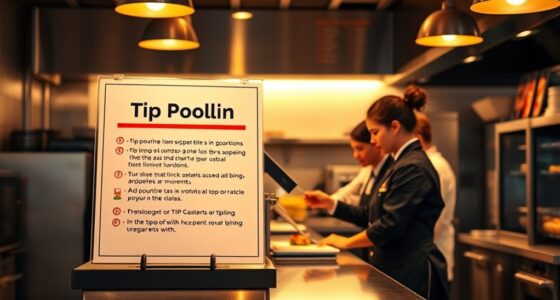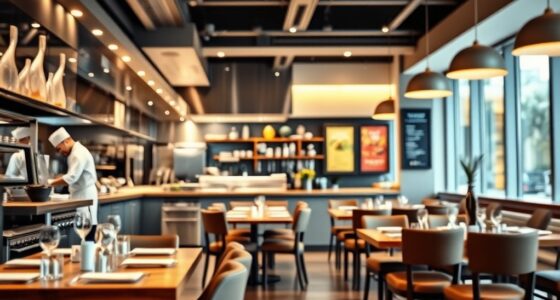Understanding Table‑Turn Time Metrics helps you measure how quickly your restaurant clears and resets tables for new guests, affecting your capacity and revenue. It involves tracking the total time a table is occupied, including seating, service, and turnaround intervals. Factors like staffing, menu complexity, and efficiency influence these times. Improving these metrics can boost your revenue and guest satisfaction. Keep exploring to discover how to optimize your seating flow further.
Key Takeaways
- Table-turn time measures the duration between guests leaving and new guests being seated, impacting restaurant efficiency and revenue.
- It includes components like seating time, turnover interval, server response, and cleaning time to identify operational bottlenecks.
- Accurate metrics are gathered through timers, digital systems, and detailed logs for precise analysis.
- Factors influencing table-turn time include staffing levels, menu complexity, reservation management, and operational practices.
- Monitoring and analyzing these metrics help optimize processes, increase seating capacity, and improve customer satisfaction.
Defining Table‑Turn Time
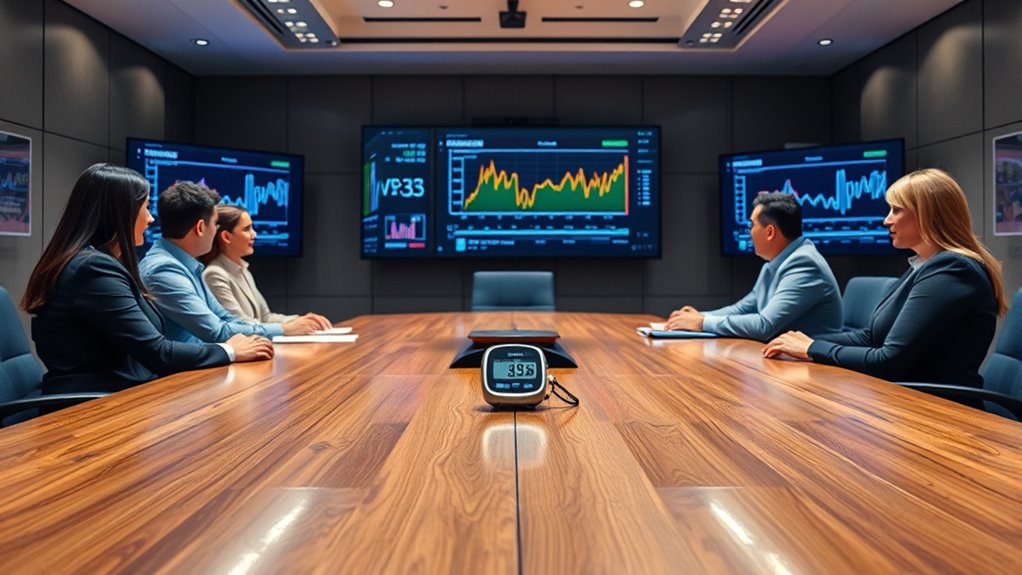
Table‑turn time refers to the duration it takes for a server or restaurant staff to clear a table and prepare it for the next guest. This metric measures how efficiently your team manages the progression between tables. It begins once the previous guests leave and ends when the table is ready to seat new diners. A shorter table‑turn time indicates quicker service, allowing you to seat more customers and increase revenue. Conversely, a longer time suggests delays that could impact customer satisfaction and overall operations. By understanding this definition, you can identify areas for improvement and implement strategies to streamline the process, ensuring faster turnover without sacrificing quality or service. Accurate measurement of table‑turn time is essential for optimizing your restaurant’s workflow.
Key Components of Table‑Turn Metrics
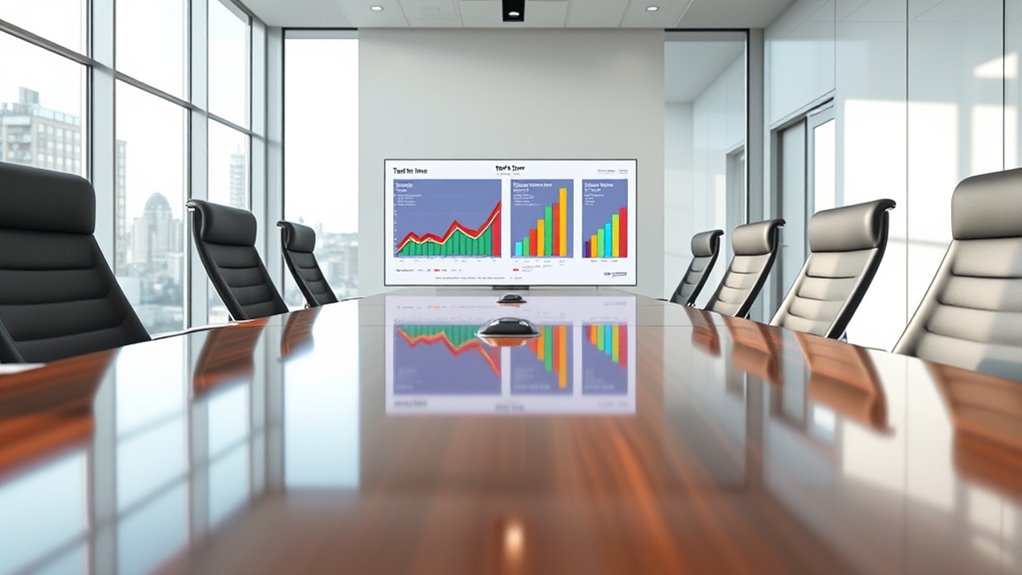
Understanding the key components of table-turn metrics is essential for accurately evaluating your restaurant’s efficiency. First, you need to take into account the total time a table is occupied, which includes both the seating duration and the turnover interval. The seating time measures how long guests stay, while the turnover interval tracks the time between guests leaving and new guests being seated. Additionally, accounting for server response time and cleaning time helps you understand operational delays. These components together reveal how well your restaurant manages flow and minimizes downtime. By analyzing these elements, you can identify bottlenecks and improve processes, ultimately increasing your table turnover rate and boosting revenue. Clear insight into these components allows you to make informed decisions to optimize your restaurant’s performance. High refresh rates can also influence how quickly your staff can turn tables, especially during peak hours.
Measuring Table‑Turn Duration
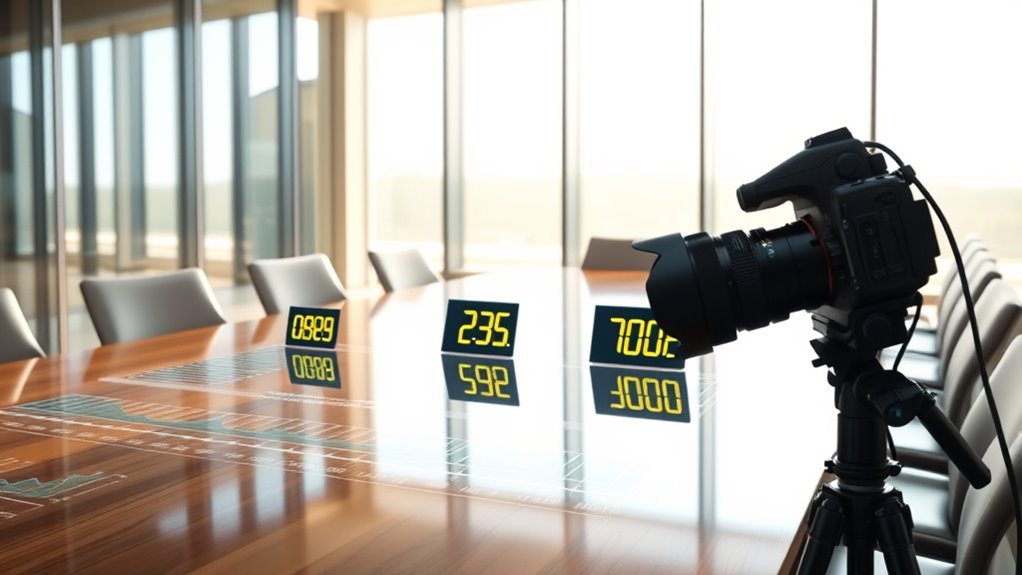
To measure table‑turn duration effectively, you need to track turnover periods accurately. This helps you identify areas where service can be sped up or improved. Analyzing these metrics allows you to enhance overall efficiency and guest satisfaction. Incorporating data-driven strategies can further optimize your operations and lead to measurable results.
Tracking Turnover Periods
Tracking turnover periods involves carefully measuring how long each table remains vacant between parties. To do this effectively, you need to record the exact time a party leaves and when the next arrives. Use a timer or a digital system to log these intervals accurately, ensuring consistency. Keep a detailed log of each turnover period for every table, which helps identify patterns and potential issues. Monitoring these durations lets you see how efficiently your staff clears and prepares tables for new guests. Shorter turnover times typically mean better utilization and increased revenue, but rushing can compromise service quality. By consistently tracking and analyzing these periods, you gain valuable insights into operational flow and areas for improvement. Accurate measurement is essential for optimizing your restaurant’s overall efficiency. Additionally, understanding vetted practices for hygiene and safety helps ensure that quick turnovers do not compromise guest well-being.
Analyzing Service Efficiency
Measuring table-turn duration provides a clear picture of how efficiently your restaurant serves guests. By tracking the time from when a guest is seated to when they leave, you can identify bottlenecks or delays in your service process. Shorter turn times often mean quicker service, higher table availability, and increased revenue. Analyze trends over different shifts or days to spot patterns and adjust staffing or workflows accordingly. Comparing your data against industry benchmarks helps you understand where you excel or need improvement. Additionally, monitoring service efficiency encourages staff to deliver faster, more attentive service without sacrificing quality. Regularly evaluating table‑turn times helps you optimize operations, boost guest satisfaction, and maximize your restaurant’s profitability.
Factors Influencing Table‑Turn Time
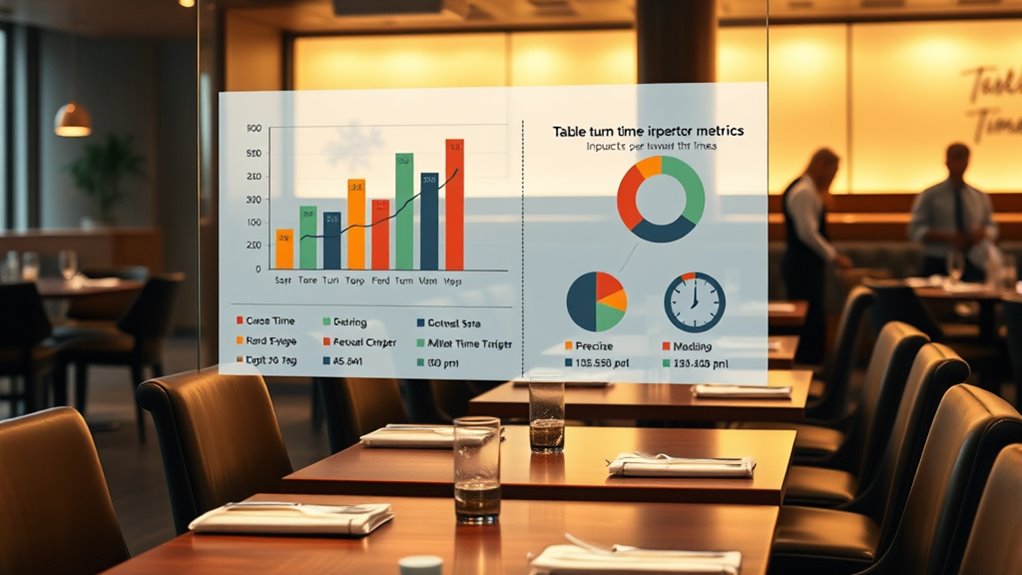
Your staff’s staffing levels and efficiency directly impact how quickly tables turn. Simpler menus with shorter prep times can speed up service, while complex dishes may slow things down. Effective reservation management also plays a vital role in reducing wait times and optimizing table usage. Implementing performance metrics can help monitor and improve overall restaurant operations.
Staffing Levels and Efficiency
Staffing levels play a crucial role in determining table‑turn time, as the right number of staff guarantees smooth and efficient service. When you have enough team members, orders are taken promptly, food is delivered quickly, and tables are cleared faster. Understaffing leads to delays, longer wait times, and unhappy customers, which slows down overall turnover. Overstaffing, on the other hand, can create unnecessary costs without improving speed. To optimize table‑turn time, you need to balance staffing based on expected customer flow, peak hours, and service complexity. Proper training also boosts efficiency, enabling staff to work swiftly without sacrificing quality. Additionally, understanding service speed and customer expectations helps tailor staffing strategies effectively. By managing staffing levels effectively, you ensure faster service, happier guests, and increased revenue.
Menu Complexity and Prep Time
How does the complexity of your menu affect table‑turn time? A more intricate menu often leads to longer prep times, which can slow down table turnover. When dishes require multiple steps, specialized ingredients, or complex cooking techniques, kitchen operations become more time-consuming. To optimize, consider these factors:
- Preparation Requirements: Complex dishes demand extensive prep, delaying service.
- Cooking Time: Longer cooking times reduce the number of tables served per shift.
- Order Accuracy: More detailed or customized orders increase the chance of mistakes, causing delays.
- Use of Specialized Equipment: Incorporating unique or advanced tools, such as unique planters, may require additional setup or handling, impacting efficiency.
Streamlining menu options or simplifying recipes can considerably reduce prep time, helping you serve more tables efficiently. Understanding how menu complexity impacts prep time allows you to adjust your offerings for better table‑turn metrics.
Reservation Management Practices
Effective reservation management plays a crucial role in optimizing table‑turn time by controlling the flow of guests and minimizing wait times. When you use reservation systems efficiently, you reduce the chances of overbooking or long waits, which can lead to customer frustration and lost revenue. Implementing time limits for reservations helps keep the pace steady and ensures tables are turned over promptly. Communicating clearly with guests about reservation times and expected durations prevents misunderstandings that cause delays. Additionally, tracking no-shows and walk-ins allows you to adjust seating plans dynamically. By managing reservations proactively, you create a smoother flow of guests, increase turnover rates, and enhance overall operational efficiency. Good reservation practices directly impact how quickly tables are refreshed and ready for new diners. Incorporating AI security strategies can further safeguard guest data and improve reservation system reliability.
The Impact of Table‑Turn on Revenue

Table-turn time directly influences a restaurant’s revenue because shorter turnaround allows for more tables to be occupied and served within the same period. When you optimize this metric, you maximize seating capacity and increase your sales potential. Faster table turnover means you can serve more guests daily, boosting overall income. Consider these key points:
- Higher table turnover rates lead to increased revenue streams.
- Reducing wait times enhances customer satisfaction and repeat visits.
- Efficient service processes enable you to handle peak hours more effectively.
Strategies to Improve Table‑Turn Efficiency
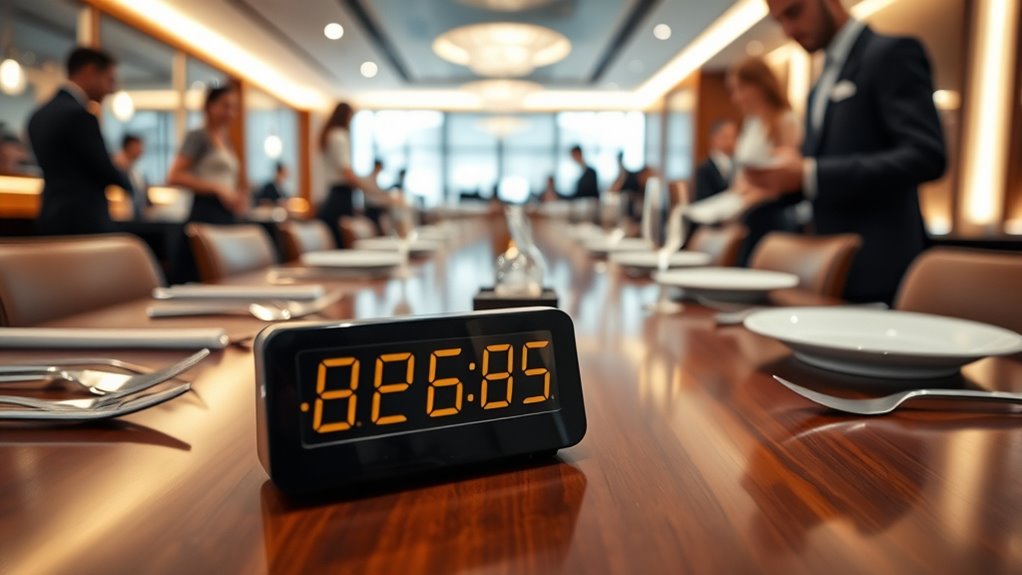
To improve table‑turn efficiency, you should focus on streamlining your service processes and reducing downtime between guests. Start by optimizing seating arrangements to minimize movement and waiting times. Train staff to serve efficiently and anticipate guest needs. Implement clear communication protocols to facilitate smooth transitions. Consider pre-bussing tables immediately after guests leave and prepping tables for the next. Use the following ideas to enhance your approach:
| Strategy | Description |
|---|---|
| Efficient Seating | Optimize layout for quick seating |
| Staff Training | Improve speed and accuracy in service |
| Pre-Serving Preparation | Ready tables before guests arrive |
| Quick Busing | Clear tables promptly after departure |
| Streamlined Check-In/Out | Speed up guest arrival and departure |
Additionally, leveraging AI-powered data analytics can help identify bottlenecks and optimize your overall service flow. These strategies help you keep the flow steady, boosting turnover without sacrificing quality.
Tools and Technologies for Tracking Table‑Turn
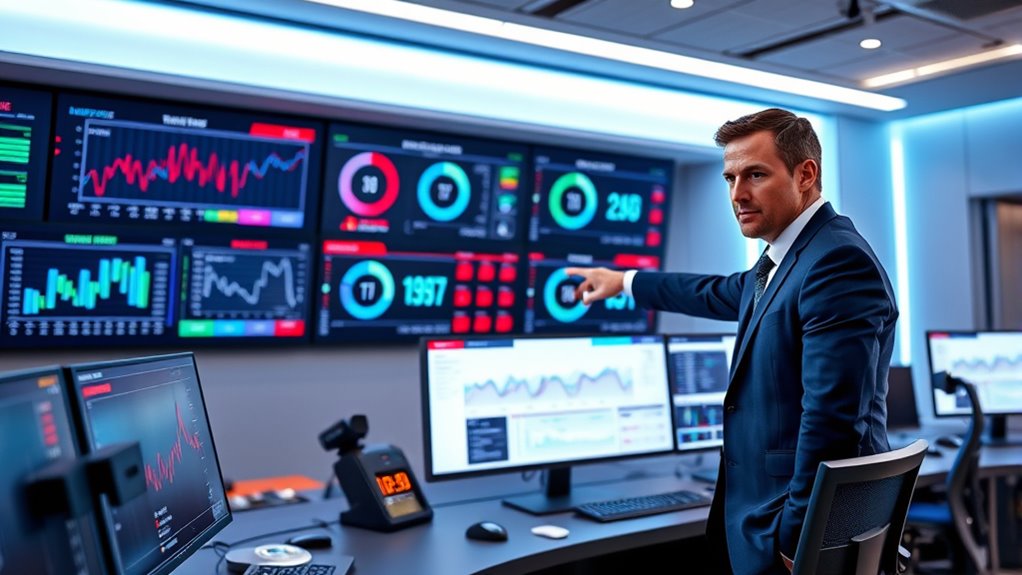
Using the right tools and technologies can substantially enhance your ability to monitor and improve table‑turn times. These tools provide real-time data, automate tracking, and help identify bottlenecks. Consider implementing:
- Digital Reservation and Waitlist Systems – Streamline check-ins and manage seating flow efficiently.
- Table Management Software – Visual dashboards allow quick updates and accurate tracking of table statuses.
- Sensors and IoT Devices – Collect data on occupancy, duration, and movement patterns without manual input.
- Data collection methods from Family Photoshoot Fails can offer insights into timing and coordination issues that affect overall efficiency.
Analyzing Data to Optimize Seating Flow

Analyzing data effectively allows you to identify patterns and pinpoint bottlenecks that slow down seating flow. By examining metrics such as average turnaround time and peak busy periods, you can uncover areas needing improvement. Visualizing this data helps you make informed decisions. For example:
| Time of Day | Average Turnaround (min) |
|---|---|
| 11 AM – 1 PM | 8 |
| 1 PM – 3 PM | 12 |
| 3 PM – 5 PM | 10 |
| 5 PM – 7 PM | 15 |
| 7 PM – 9 PM | 9 |
This table shows when bottlenecks occur, guiding you to optimize staff scheduling or streamline processes. Continuous data analysis guarantees you stay ahead, improving seating efficiency and customer experience.
Frequently Asked Questions
How Does Table-Turn Time Vary Between Different Restaurant Types?
You’ll notice that table-turn time varies across restaurant types. Fast-food spots usually have quick turnarounds, often under 30 minutes, to serve more customers efficiently. Casual dining restaurants tend to have longer turns, around 45 minutes to an hour, to allow for a relaxed experience. Fine dining establishments often have the slowest pace, with turns exceeding an hour, prioritizing quality over speed. Your experience changes based on the restaurant’s style and service approach.
What Are Common Mistakes in Measuring Table‑Turn Time?
You might overlook key factors when measuring table-turn time, leading to inaccuracies. Common mistakes include not excluding time spent cleaning or resetting tables, mixing different table sizes or types, and ignoring peak vs. off-peak periods. Additionally, relying solely on manual timing can cause errors. To get accurate data, guarantee consistent measurement practices, account for all relevant activities, and use automated tools if possible.
How Does Customer Satisfaction Relate to Table‑Turn Efficiency?
Oh, sure, because customer satisfaction totally hinges on how fast you clear tables, right? In reality, it’s more about the quality of service and ambiance, but quick table turns help reduce wait times, boosting happiness. When you manage table efficiency well, guests feel attended to and valued, leading to better reviews. So, while speed matters, don’t forget to serve kindness and efficiency—those are the real secret ingredients.
Can Table‑Turn Time Be Used to Predict Staff Performance?
You wonder if table‑turn time can predict staff performance. While it offers insight into efficiency, it shouldn’t be your sole measure. A quick turn might mean rushed service, affecting quality. Instead, combine table‑turn data with customer feedback and staff observations. This all-encompassing approach helps you accurately assess performance, ensuring your team maintains speed without sacrificing service quality. Ultimately, balanced metrics give you the best picture of staff effectiveness.
What Legal or Safety Considerations Affect Table‑Turn Optimization?
You’re walking a tightrope when optimizing table turns, as safety and legal standards are non-negotiable. You must guarantee compliance with health codes, such as proper sanitation, and adhere to employment laws regarding working hours. Ignoring these can backfire, risking fines or shutdowns. Balancing efficiency with safety isn’t just smart; it’s essential. Keep safety top of mind, and don’t cut corners—your reputation depends on it.
Conclusion
Mastering table-turn time isn’t just a skill—it’s the secret weapon that can turn your restaurant into a bustling, revenue-generating powerhouse. By understanding and optimizing every second, you’ll open the kind of efficiency that leaves competitors in the dust and customers craving your lightning-fast service. When you harness the power of precise metrics and smart strategies, you’ll transform your seating flow into an unstoppable force, ensuring your success skyrockets beyond what you ever thought possible.
